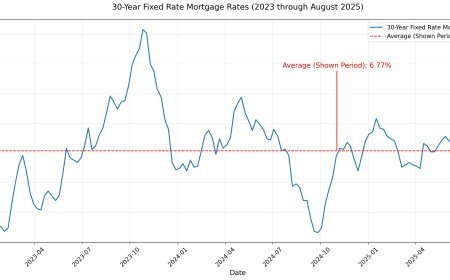CD Laddering Strategy: Maximize Returns While Maintaining Flexibility
CD laddering sounds like something you'd need a construction crew for, but it's actually one of the smartest strategies for maximizing your savings returns while keeping your money accessible. Think of it as the financial equivalent of having your cake and eating it too—you get the higher interest rates that come with longer-term CDs, but you also maintain regular access to your money as each rung of your ladder matures. The beauty of this approach becomes especially apparent in uncertain interest rate environments, where you're not locked into today's rates for years at a time. Instead, you're constantly repositioning portions of your savings to take advantage of changing market conditions.

CD laddering sounds like something you'd need a construction crew for, but it's actually one of the smartest strategies for maximizing your savings returns while keeping your money accessible. Think of it as the financial equivalent of having your cake and eating it too—you get the higher interest rates that come with longer-term CDs, but you also maintain regular access to your money as each rung of your ladder matures.
In This Article:
- CD Laddering Fundamentals: How this strategy works and why it outperforms traditional savings approaches.
- Building Your First Ladder: Step-by-step instructions for creating a ladder that matches your needs and timeline.
- Timing and Interest Rate Strategies: When to start a ladder and how to optimize for different rate environments.
- Advanced Laddering Techniques: Barbell strategies, bullet ladders, and other sophisticated approaches.
- Common Mistakes and How to Avoid Them: Pitfalls that can undermine your ladder's effectiveness.
The beauty of this approach becomes especially apparent in uncertain interest rate environments, where you're not locked into today's rates for years at a time. Instead, you're constantly repositioning portions of your savings to take advantage of changing market conditions while maintaining the security and predictability that makes CDs attractive in the first place.
The Mechanics of CD Laddering
A CD ladder works by spreading your investment across multiple certificates of deposit with different maturity dates, creating a schedule where one CD matures at regular intervals. Instead of putting $25,000 into a single five-year CD, you might purchase five CDs of $5,000 each, with terms of one, two, three, four, and five years respectively.
As each CD matures, you have choices: take the money for other uses, or reinvest it in a new CD at the top of your ladder. If you reinvest, you maintain the ladder structure while potentially capturing higher interest rates if they've risen since you started. This flexibility distinguishes laddering from simply buying long-term CDs and hoping for the best.
The strategy works because longer-term CDs typically offer higher interest rates than shorter-term alternatives, but you're not sacrificing all liquidity to capture those rates. Every year in our example, you'd have $5,000 plus interest becoming available, providing regular opportunities to reassess your financial situation and market conditions.
Constructing Your Ladder
Building an effective CD ladder starts with determining how much money you want to dedicate to this strategy and how often you want access to maturing funds. Common ladder structures mature every three months, six months, or annually, with annual ladders being most popular for their simplicity and effectiveness.
The number of rungs in your ladder depends on your goals and the maximum term you're comfortable with. A five-rung annual ladder might include CDs maturing in one, two, three, four, and five years. Once established, each maturing CD gets reinvested in a new five-year CD, maintaining the structure while maximizing your average interest rate.
Consider your cash flow needs when designing your ladder. If you might need access to funds for planned expenses or opportunities, structure your ladder so that adequate amounts mature around those times. The predictable maturity schedule makes CD ladders excellent for funding known future expenses like home improvements, vacations, or education costs.
Interest Rate Environment Considerations
CD laddering strategies work differently depending on whether interest rates are rising, falling, or stable. In rising rate environments, ladders shine because you regularly get opportunities to reinvest at higher rates. Each maturing CD can be replaced with a new one at improved terms, gradually increasing your portfolio's overall yield.
During falling rate periods, ladders provide protection by locking in higher rates for extended periods. While new money might earn less, your existing CDs continue earning the higher rates you secured earlier. This protection becomes particularly valuable during economic downturns when rates often fall rapidly.
Stable rate environments make laddering less critical from a rate optimization perspective, but the liquidity benefits remain valuable. You still get regular access to funds and the ability to adjust your strategy as your financial situation evolves.
Advanced Laddering Strategies
Experienced investors often employ more sophisticated laddering approaches to optimize returns or meet specific needs. Barbell strategies combine very short-term and very long-term CDs, skipping intermediate terms. This approach maximizes current liquidity while capturing the highest available long-term rates, though it sacrifices the smooth cash flow of traditional ladders.
Bullet strategies involve purchasing CDs with the same maturity date but at different times, creating a lump sum available for a specific future need. This approach works well when you know you'll need a large amount of money at a particular time, like funding a child's college education or making a major purchase.
Some investors create multiple ladders with different purposes—one for emergency fund accessibility, another for long-term savings growth, and perhaps a third for funding specific goals. This approach provides maximum flexibility but requires more management and larger initial investments.
Choosing the Right CDs
Not all CDs work equally well in laddering strategies. Look for institutions offering competitive rates across different terms, as you'll be purchasing multiple CDs and want consistency in your returns. Online banks and credit unions often provide the best rates, though you'll sacrifice some convenience compared to traditional banks.
Pay attention to minimum deposit requirements, as they can affect your ability to create evenly spaced ladder rungs. Some institutions offer better rates for larger deposits, which might influence how you structure your ladder amounts.
Consider the institution's financial stability and customer service quality, as you'll be maintaining relationships with them for years. FDIC or NCUA insurance protects your deposits, but dealing with failed institutions creates hassles you'd prefer to avoid.
Tax Implications and Optimization
CD interest is taxable as ordinary income in the year it's earned, which can create tax planning considerations for large ladders. The regular maturity schedule provides opportunities to manage your tax liability by timing reinvestments or withdrawals.
Consider holding CD ladders in tax-advantaged accounts like IRAs if your situation allows. This approach eliminates annual tax obligations on the interest while maintaining the ladder's structural benefits. However, IRA contribution limits might restrict the size of ladders you can build using this strategy.
Keep detailed records of your ladder structure, including purchase dates, maturity dates, and interest rates. This information helps with tax preparation and enables you to evaluate your ladder's performance over time.
Common Pitfalls to Avoid
The biggest mistake in CD laddering is starting with too complex a structure. Begin with a simple annual ladder and add complexity only after you're comfortable managing the basic approach. Overly complicated ladders often get abandoned when they become burdensome to maintain.
Don't chase small rate differences between institutions if it means spreading your ladder across too many banks. Managing relationships with multiple institutions creates administrative overhead that might not justify modest rate improvements.
Avoid the temptation to break your ladder structure by withdrawing maturing funds for non-essential purposes. The strategy's power comes from consistent reinvestment and compound growth over time. If you frequently need the maturing funds for other purposes, consider reducing your ladder size rather than disrupting the structure.
Monitoring and Adjusting Your Strategy
Successful CD laddering requires periodic review and adjustment as your financial situation and market conditions change. Set calendar reminders for maturity dates to ensure you don't miss reinvestment opportunities or accidentally allow CDs to auto-renew at potentially unfavorable rates.
Track your ladder's performance against alternative strategies like high-yield savings accounts or money market funds. While CDs typically offer higher rates, the gap varies over time, and you want to ensure your strategy remains optimal for your situation.
Be prepared to modify your ladder structure as your needs evolve. Life changes like job transitions, family additions, or major purchases might require adjusting your ladder's size, structure, or maturity schedule.
CD laddering represents a middle ground between the safety of savings accounts and the returns of longer-term investments. When executed properly, it provides predictable returns, regular liquidity, and protection against interest rate volatility. While it requires more planning and management than simply parking money in savings accounts, the improved returns and flexibility often justify the additional effort for savers with substantial deposits and medium-term time horizons.
What's Your Reaction?
 Like
0
Like
0
 Dislike
0
Dislike
0
 Love
0
Love
0
 Funny
0
Funny
0
 Angry
0
Angry
0
 Sad
0
Sad
0
 Wow
0
Wow
0








































